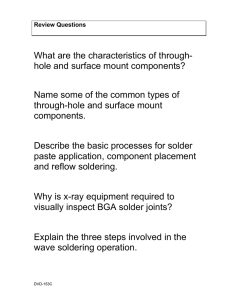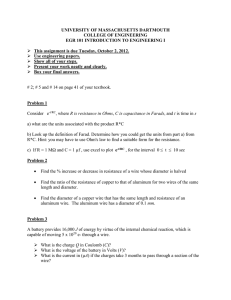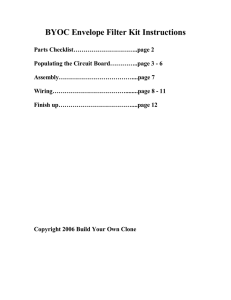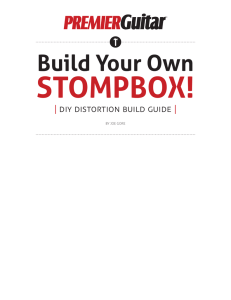Super-2-CCA Fat Wire Technical and
advertisement
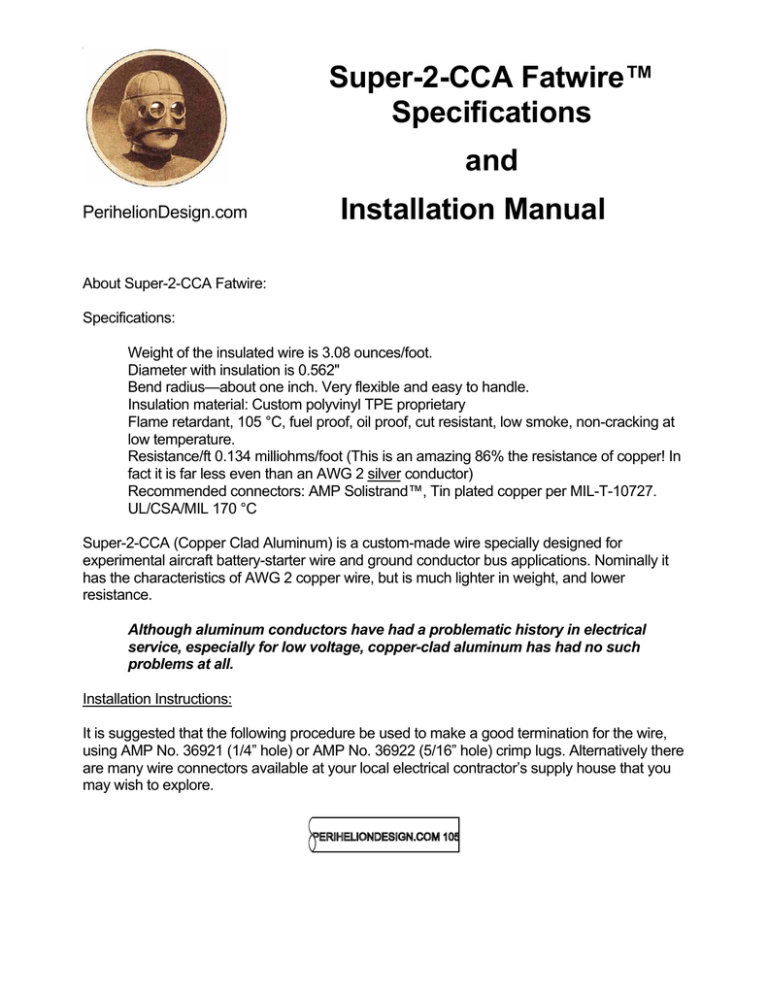
Super-2-CCA Fatwire™ Specifications and PerihelionDesign.com Installation Manual About Super-2-CCA Fatwire: Specifications: Weight of the insulated wire is 3.08 ounces/foot. Diameter with insulation is 0.562" Bend radius—about one inch. Very flexible and easy to handle. Insulation material: Custom polyvinyl TPE proprietary Flame retardant, 105 °C, fuel proof, oil proof, cut resistant, low smoke, non-cracking at low temperature. Resistance/ft 0.134 milliohms/foot (This is an amazing 86% the resistance of copper! In fact it is far less even than an AWG 2 silver conductor) Recommended connectors: AMP Solistrand™, Tin plated copper per MIL-T-10727. UL/CSA/MIL 170 °C Super-2-CCA (Copper Clad Aluminum) is a custom-made wire specially designed for experimental aircraft battery-starter wire and ground conductor bus applications. Nominally it has the characteristics of AWG 2 copper wire, but is much lighter in weight, and lower resistance. Although aluminum conductors have had a problematic history in electrical service, especially for low voltage, copper-clad aluminum has had no such problems at all. Installation Instructions: It is suggested that the following procedure be used to make a good termination for the wire, using AMP No. 36921 (1/4” hole) or AMP No. 36922 (5/16” hole) crimp lugs. Alternatively there are many wire connectors available at your local electrical contractor’s supply house that you may wish to explore. z Page 2 August 15, 2009 Remove 0.75” of the insulation from the end. Make sure you do not nick the metal strands. 0.75" Crimping the Lugs: Check to make sure the lugs slide onto the bare wire end. Slip on heat shrink tubes as desired. If you do not have a suitable tool for crimping the lug onto the wire end, (the professional tools are usually very expensive) you can make a handy jig to do this— Take two pieces of metal. Clamp them together and drill an 19/32” or 15 mm diameter hole through the block, and a 3/8” hole perpendicular to the first hole to accept a 3/8” steel punch with a rounded face ground onto the end. Dimensions are not critical. The only purpose is to stop from excessively deforming the collar. Clamp the wire and the lug into the jig in the jaws of a sturdy vice, leaving a 1/8” gap between the insulation and the lug. Hammer the punch firmly until the wire shows no movement in the lug. 3/8" Steel Round Bottomed Punch The crimped lug should look more or less like this: Dimple z Page 3 August 15, 2009 Soldering the lugs--Fixture the crimped connectors to a piece of wood using a wood screw or drywall screw, with the flat side of the lug down. Now drag out that big old 100W soldering iron (everyone has one—or you can use the soldering tip for your propane torch—but NOT the flame), wire brush the crud off the end, crank it up and heat the lug and copper clad aluminum conductor. Using heavy-gauge rosin core electrical solder, fill the interstices with solder until the solder comes out the back end (you should see it in the little 1/8” gap). With reasonable care the wire insulation will not be damaged. Electrical Solder Big-Ol' Soldering Iron Rinse off the rosin flux with some tri-chlor or MEK. We suggest some type of electrical coating be used to seal the small 1/8” gap and the exposed face of the wire to make a neat job. Epoxy or silicone would do. Fingernail polish would be great. Slip on some shrink tubing (5/8”-3/4” clear is best but any color is fine). Shrink. 5/8"-3/4" Heatshrink Tubing Done. The installation of any large wire follows the same basic rules used when installing hoses and tubing—prevent motion at the joint by good design, adequate service loops and proper installation. Eric M. Jones Perihelion Design 15AUG09
